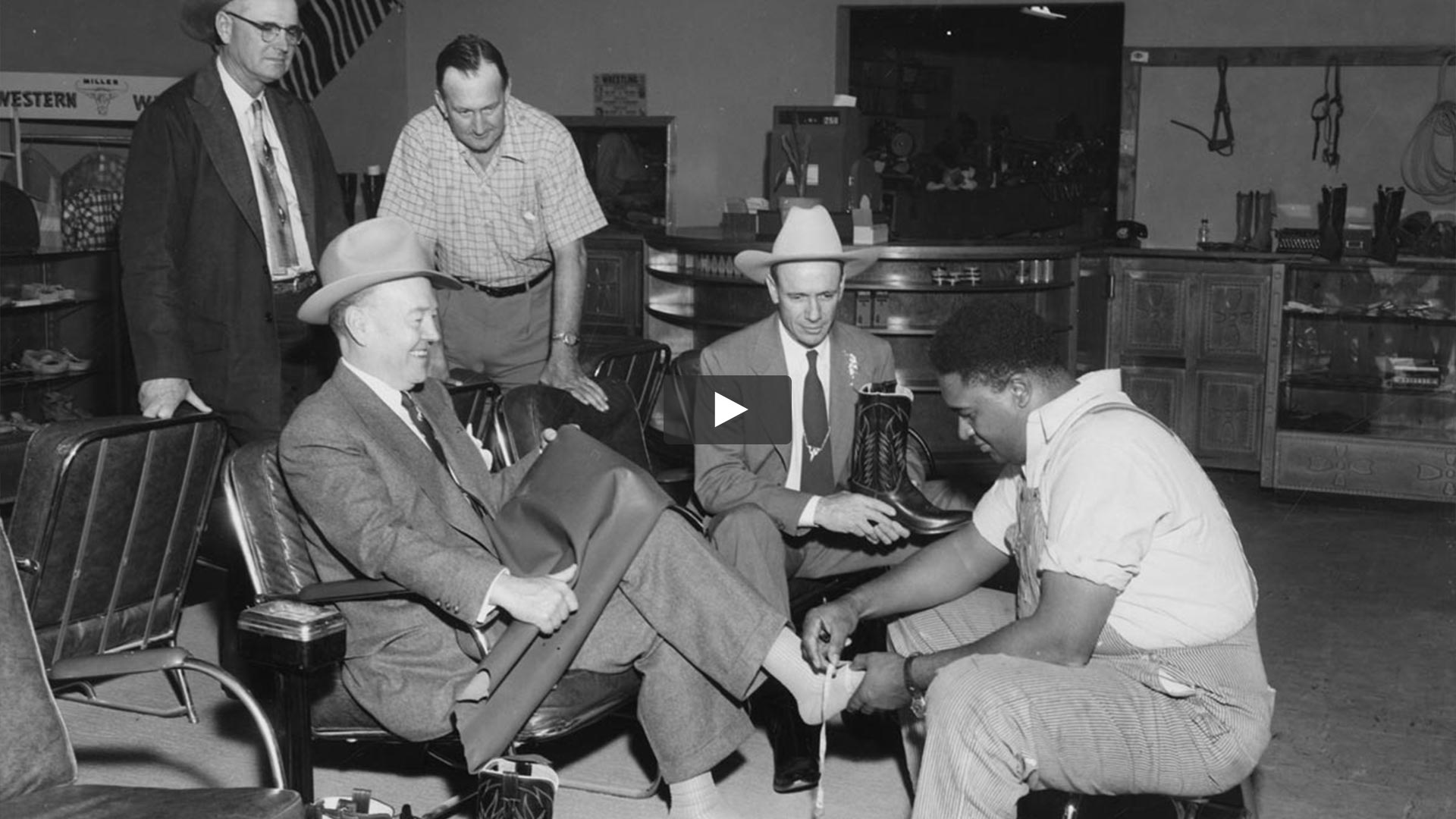
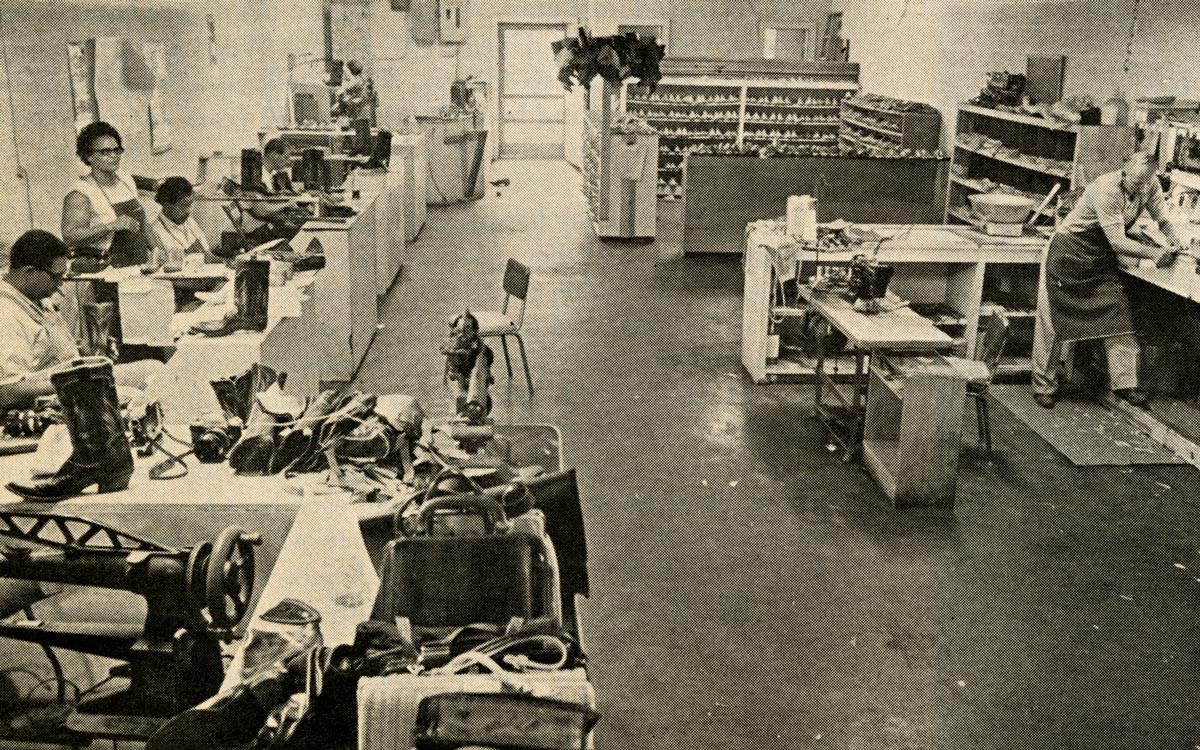
Lusk’s Boot Shop opened in October 1946 at 1706 Avenue A and could be found on the southeast edge of the Lubbock area known as The Flats. This area had been established as neighborhoods, schools, and churches for African-Americans. Lusk liked to brag that within six months of opening his shop he was already backed up half a year on orders. At first only African-American neighbors frequented Lusk’s shop.
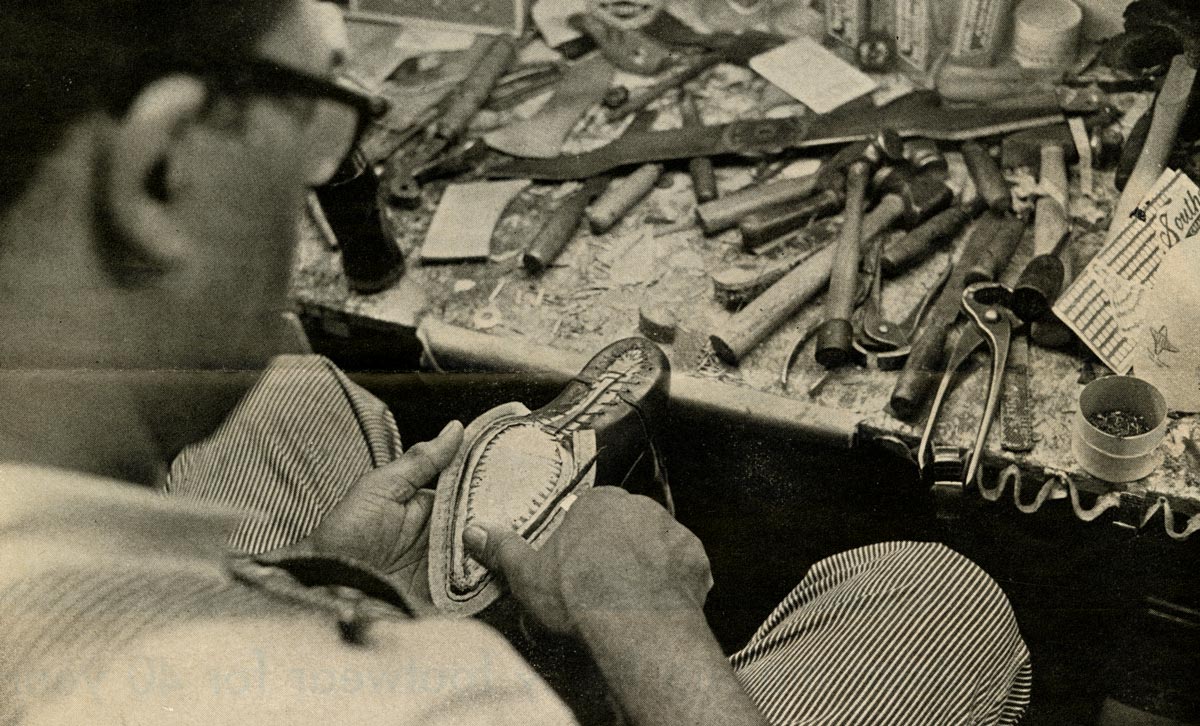
The financial success of Lusk’s boot shop would come from white customers from the west side of Avenue A, and then, as notoriety grew, celebrities from across the country.
Black Texas folklorist, J. Mason Brewer, wrote a feature for Ebony magazine (around 1947), highlighting the accomplishments of three prominent Black Lubbock businessmen, including Lusk:
Brewer wrote:
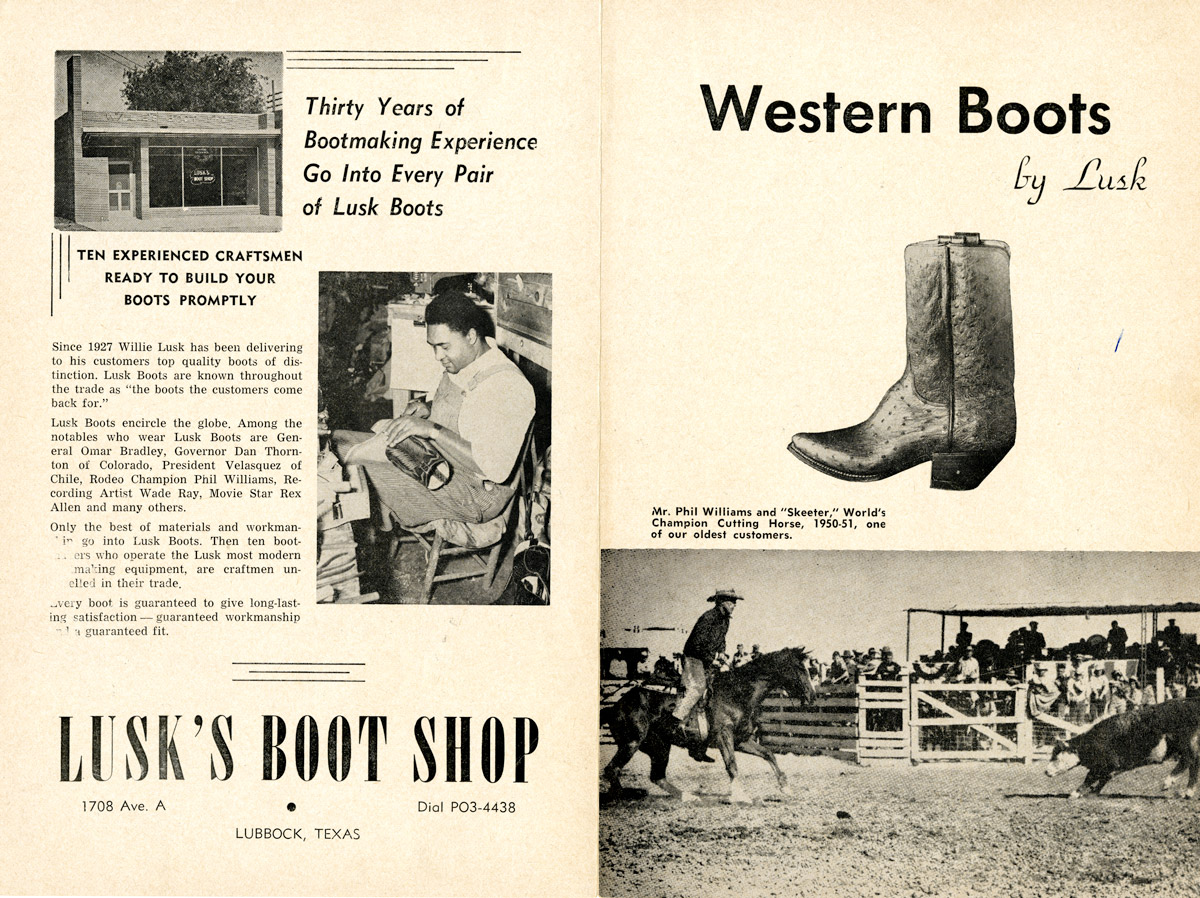
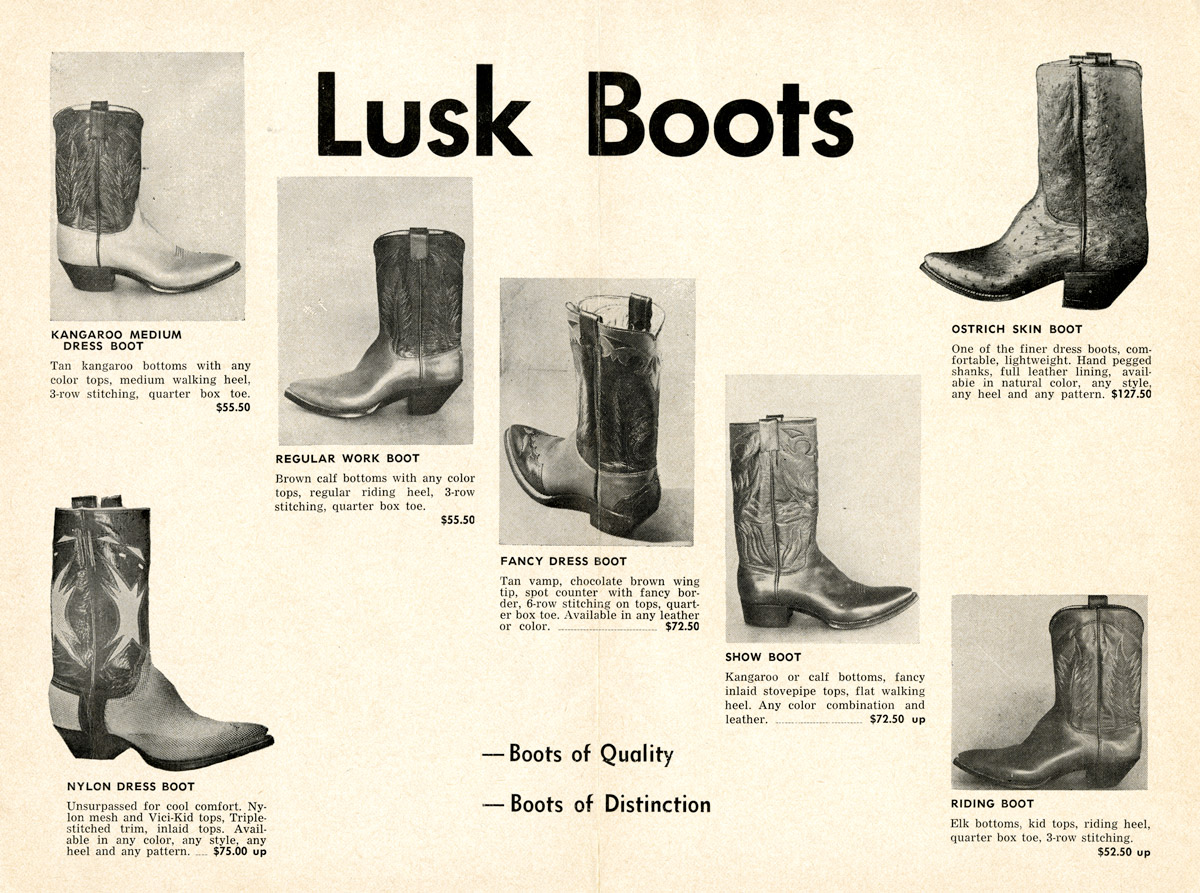
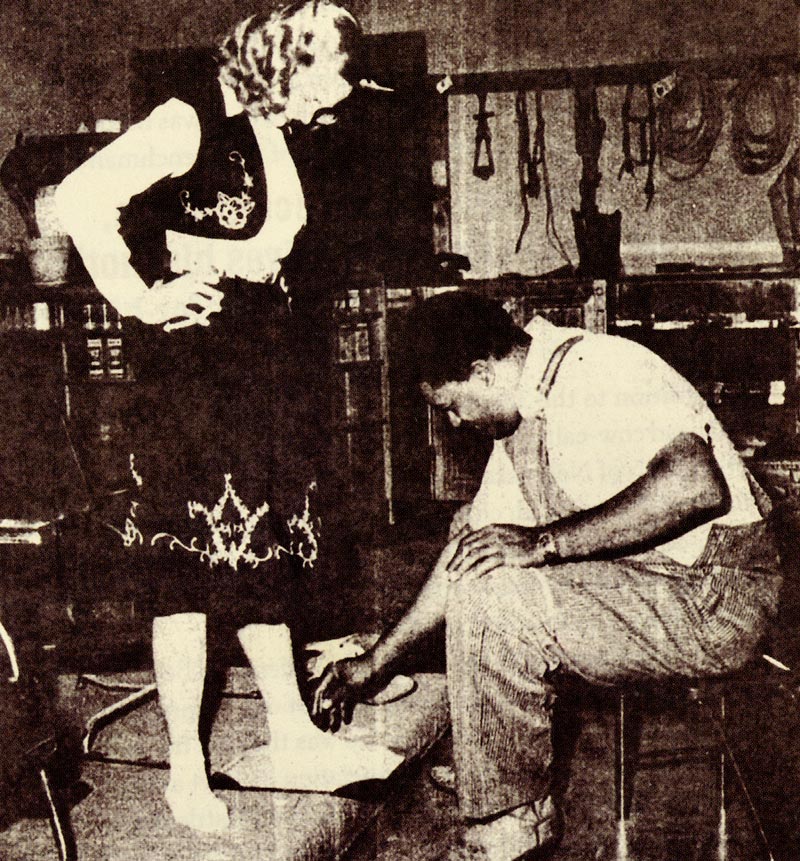
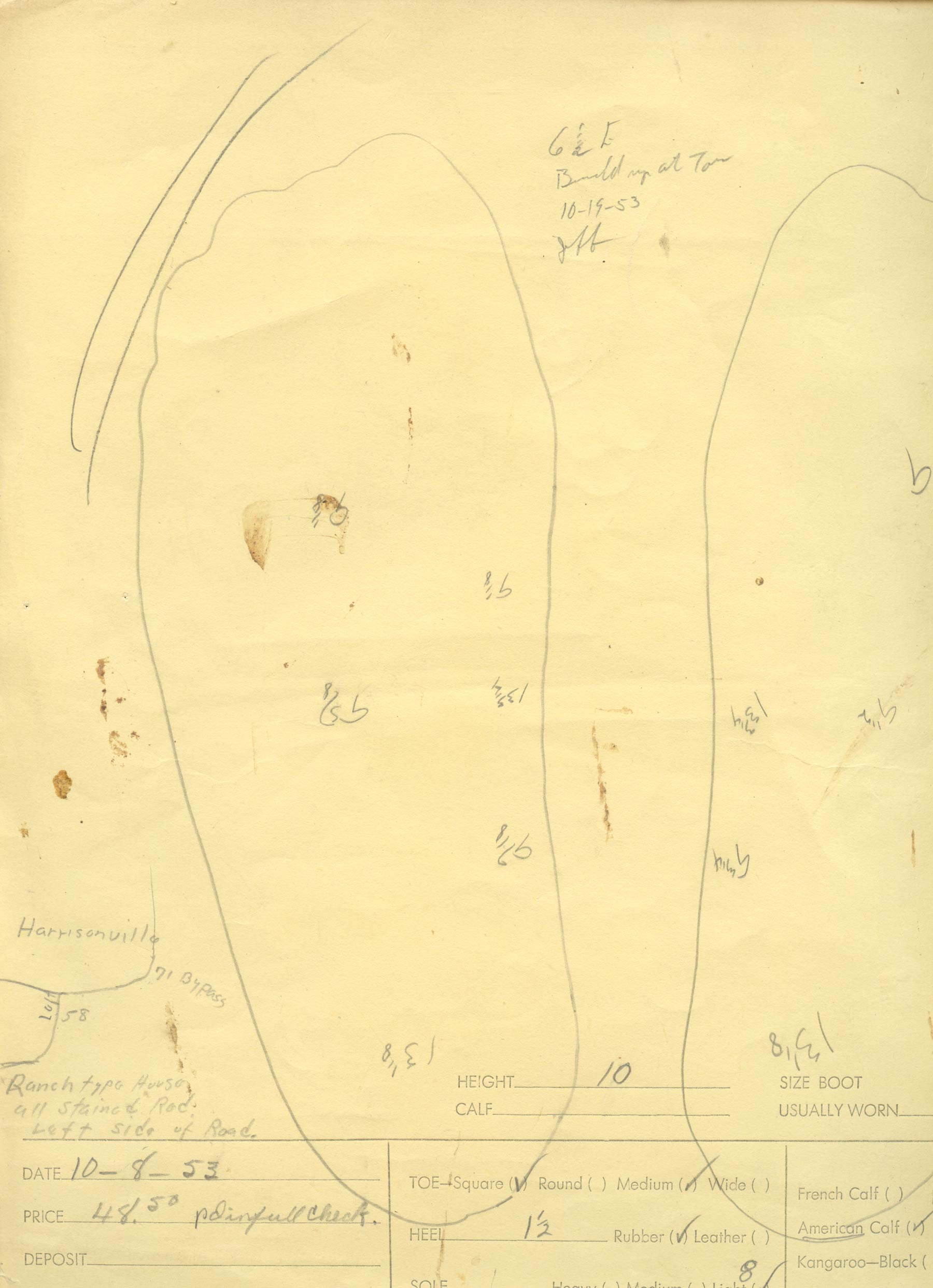
Declared “the best boot maker in the world” in 1951, Lusk was featured in the Wall Street Journal, Sports Illustrated and Ebony magazines.
While Lusk seemed to appreciate the accolades for the look of his boots, what mattered most to him was how the boot fit.
He told a reporter in 1960:
Lusk himself insisted on taking measurements of new clients. He personally crafted orders for celebrities but assigned his employees the rest.
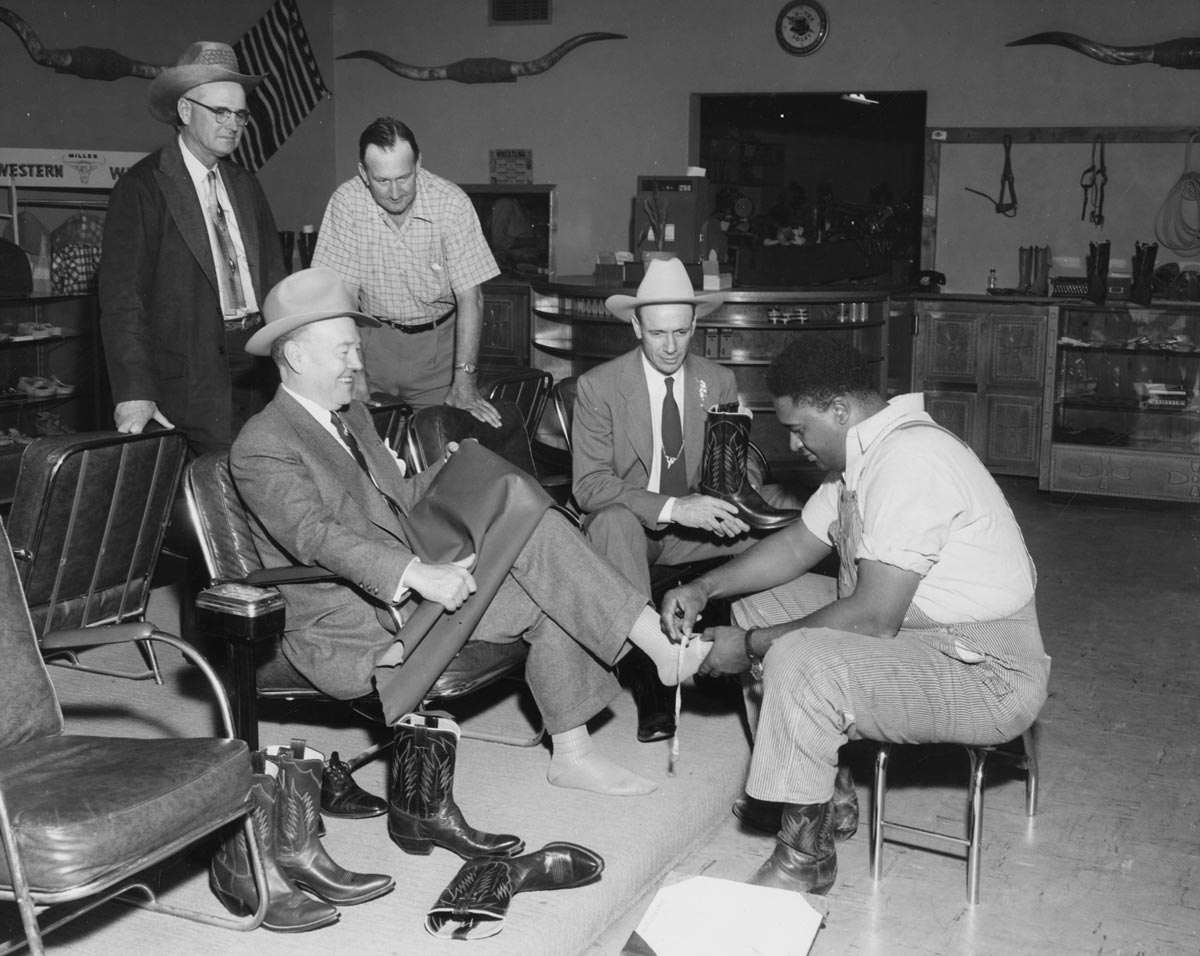
Famous for his variation on the Number 10 flame stitch, or now known as the Lusk Pattern, other indications of a Lusk boot include a curve added to the bottom of the boot. The sole of most boots arches up and back. A Lusk boot has a rounded curve in the upper part of the sole, making it particularly good for those who ride horses. Lusk boots will not have a sole lining, leaving visible the wooden pegs that hold the boot together.
In a 1951 radio interview Lusk was asked about being proclaimed the best boot maker in the world. His answer:
Lusk boots are recognizable by a variation of the Number Ten Stitch. The Number Ten Stitch appears in innumerable variations from the 1920s on through the present. The basic pattern is a line of stitchwork that cuts back and forth jaggedly, creating a distinctive flamelike design along the side of the boot top. The base of the flame may appear near the cuff of the boot, although it more often flares up from near the vamp.
Lusk's earliest documented work in Lubbock, dating from 1946, shows his personal variation of the stitch. Since this was the same year that Lusk left E. E. Brown's shop in downtown Lubbock to open his own shop, it seems likely that the version of the Number Ten Lusk was using at the time was either identical to or very similar to the one he used at Brown's.
A version of the Number Ten which closely resembles Lusk's early work is still used by a custom bootmaker in San Angelo, J. L. Mercer, and Son. Mercer's shop was founded in 1923, not long before the 14-year-old Lusk began working at N. A. Brown's Boot and Saddle Shop, just two blocks away. It seems likely that both bootmakers were influenced by the same examples, and so developed their own, similar interpretations of the same theme.
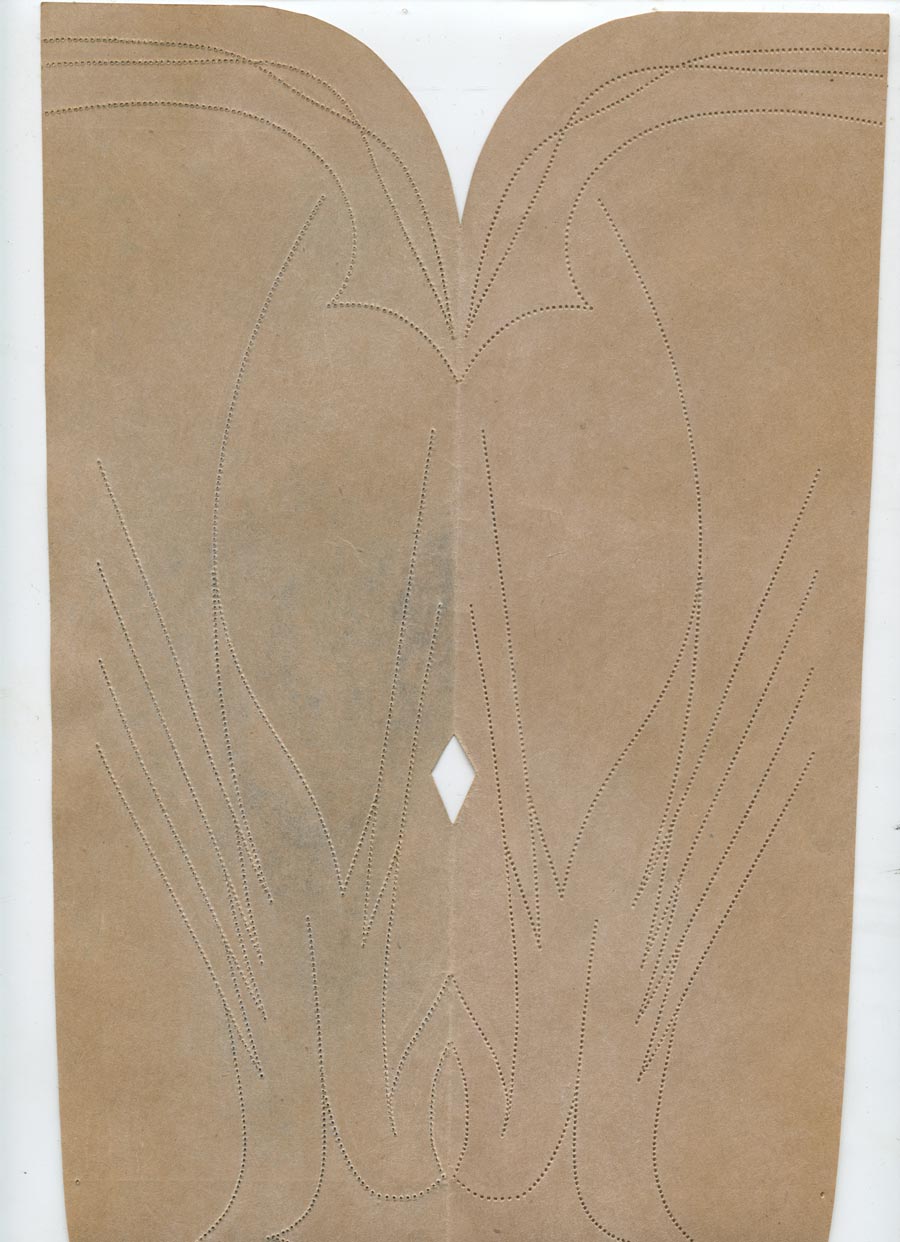
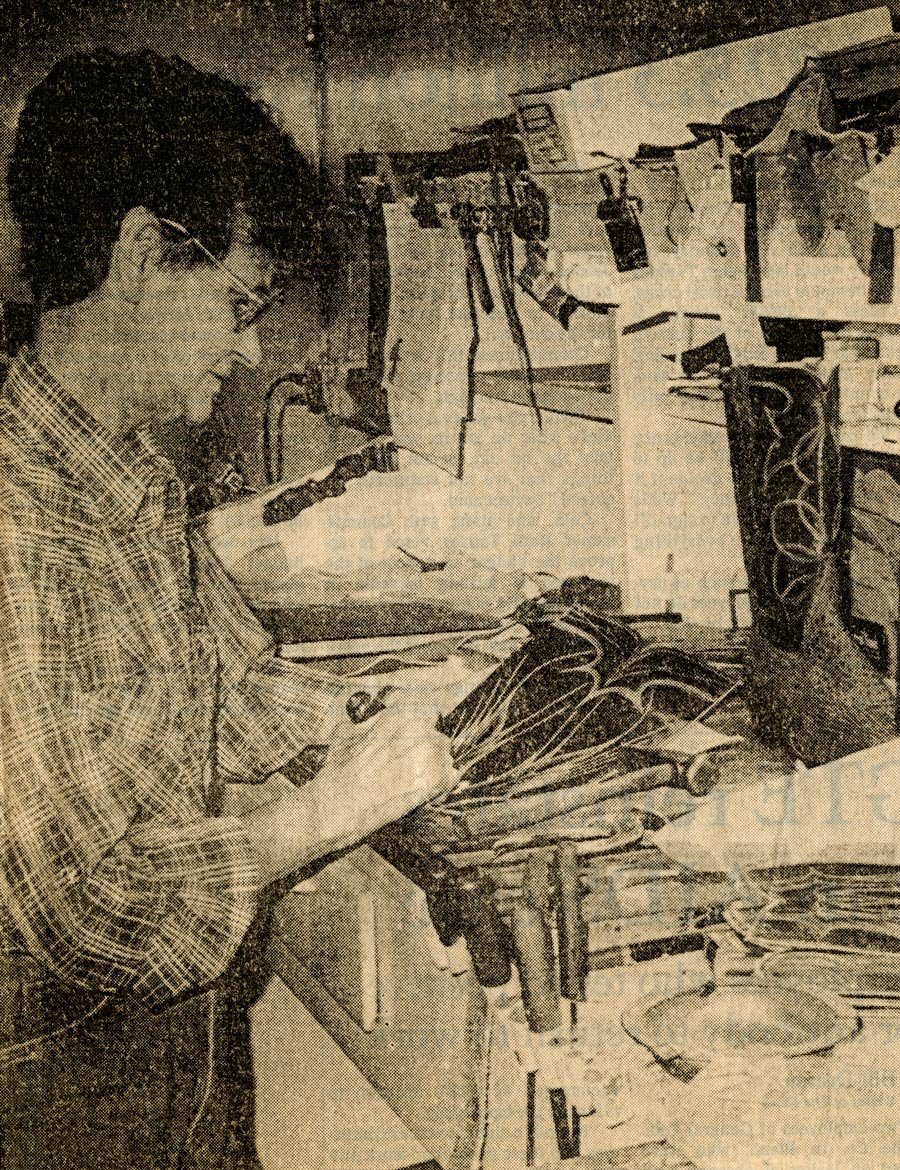
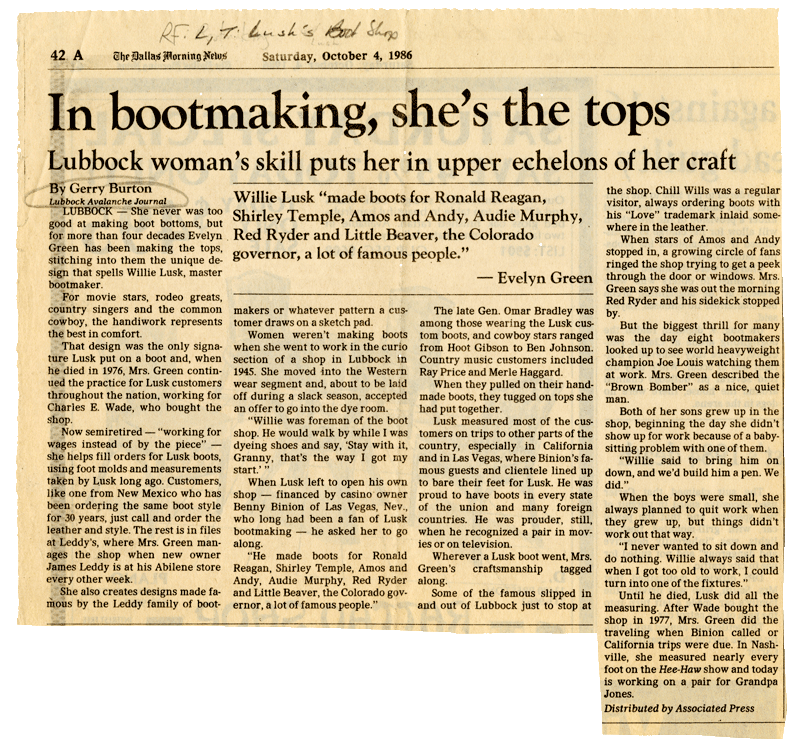
In the mid-1940s, a young woman was hired at the Brown Boot Shop who would become significant in Willie Lusk’s business. Green had prior experience stitching boot tops at Leddy’s shop in Abilene. Leddy used a similar Number Ten Stitch as Lusk. Evelyn Green started behind the counter and in the dye room. Lusk, while foreman, gave her a position as a trainee in the workshop. Green would follow Lusk when he opened his own shop in 1946, becoming integral to the operation of the business and production of world-class boots within Lusk’s successful boot shop.
Green worked for many years for Lusk, exclusively doing almost all the stitching on boots made in his shop. Evelyn also taught James Leddy’s daughter Debby the unique Number Ten stitch.
When Leddy bought the Lusk boot shop after Luck’s Lusk’s death, he continued to employ Evelyn Green as the manager in the Lubbock store. After Leddy closed the Lubbock shop in 1991, he continued to pay Mrs. Green for stitching boot tops.
Evelyn Green gifted the Museum of TTU several items from the Lusk Boot Shop before she died in 1991. While today a buyer can no longer purchase a pair of custom boots made by Willie Lusk, that same buyer can still have a pair of boots stitched in the Lusk inverted flame stitch pattern done by James Leddy’s daughter Debby at her Abilene shop.